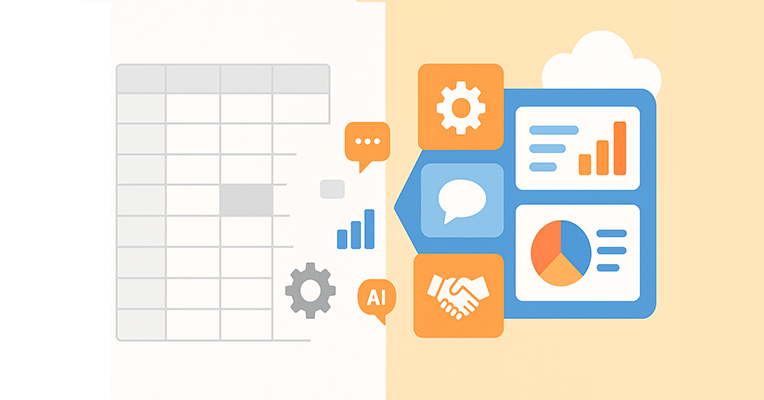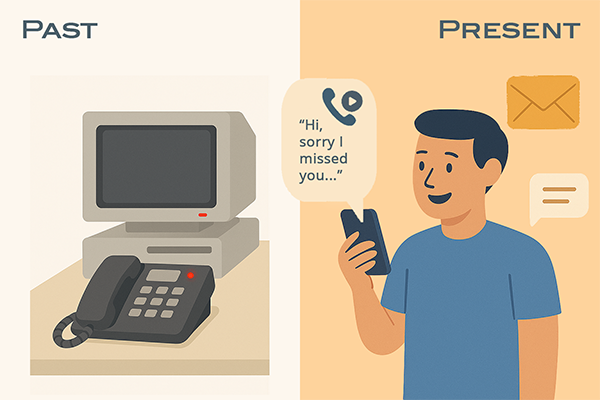This article began with me thinking about AI usage. In talking to people, I began to think: “It really seems like 90% of B2B businesses have zero systematic AI in their revenue engines.” So I started digging in. And though I couldn’t substantiate that exact number, the evidence suggested that I was at least directionally right: what is clear is that most B2B sellers have not yet adopted AI meaningfully, leaving a vast frontier open for advantage.
The Reality Check: How Many B2B Firms Are Truly Using AI?
Here’s what credible third-party data actually says:
- According to a McKinsey B2B Pulse survey, only 21% of surveyed commercial leaders claim their firms have fully enabled generative AI across buying and selling, and another 22% have only piloted use cases. (McKinsey)
- In the same space, McKinsey reports that the function seeing the greatest jump in adoption of generative AI from 2023 to 2024 has been sales and marketing. (McKinsey)
- A Lucidworks study of over 1,100 companies found only 31% of B2B organizations qualify as “achievers” deploying both core and advanced AI capabilities, while over 40% remain “spectators” with little or no AI. (Lucidworks)
- HubSpot’s “State of AI in Sales” report shows 43% of sales professionals currently use AI tools, and 47% of them use generative AI (e.g. ChatGPT) for prospect outreach. (HubSpot)
These findings show that while AI is gaining traction, the majority of B2B sellers are still in early or limited stages. So, although we can’t confidently assert “95% have zero AI,” it's fair—and compelling—to frame the situation as: most B2B firms have not yet integrated AI meaningfully into their revenue operations.
And that gap is your opportunity.
Three Simple AI / Automation Plays for Quick Wins
You don’t need a moonshot to start. Below are three relatively modest plays that many B2B firms can implement in weeks or months. Each has precedent, measurable impact, and room to scale.
Why it Works
Leverage historical CRM, web, and engagement data to build a model that assigns “propensity to convert” scores. This helps your sales team focus on the right leads.
Supporting Evidence
- In one case, a medium-sized B2B component manufacturer used an interactive configuration tool and AI scoring to raise conversion of qualified leads by 37%. (Brixon Group)
- Another case study claims top B2B companies saw a 25% conversion lift using AI lead scoring over baseline. (SuperAGI)
- Some sources say predictive scoring can boost lead generation ROI by 70% and cut sales cycle length by ~30%. (GrowthJockey)
Expected Gains
10–25% improvement from lead-to-qualified; fewer wasted touches; better alignment between marketing and sales.
Best Industries / Use Cases
SaaS, tech, industrial, parts / components, services. Quickest returns can be seen with substantial lead volume.
Why it Works
Use chatbots or conversational AI on landing pages or on key web flows to ask screening questions, surface buying signals, and schedule meetings automatically.
Supporting Evidence
- AI personalization pilots have shown engagement lifts of ~35%. (SuperAGI)
- Many firms are deploying chat assistants to reduce friction in B2B sales. (ON24)
Expected Gains
Better contact-to-qualified conversation, faster follow-up, higher lead capture (5-20% lift possible).
Best Industries / Use Cases
Tech, software, services, equipment, consultancies.
Why it Works
Use generative AI tools to draft emails, personalize messaging, generate content variants, and scale outbound. This reduces manual time and improves consistency.
Supporting Evidence
- HubSpot reports that sales reps save 30–60 minutes per session using AI in outreach. (HubSpot)
- In Salesforce’s “State of Sales,” 83% of sales teams with AI saw revenue growth vs. 66% without. (Salesforce)
- Others claim businesses using AI in sales see 10–30% revenue increases. (B2B Rocket)
Expected Gains
Time savings (several hours per rep per week), more consistent messaging, modest response lift (5-15%).
Best Industries / Use Cases
Nearly universal across B2B segments, especially in outbound or mid-funnel motion.
Critical Note on implementation: quality of data, CRM integration, and adoption (sales and marketing alignment) matter far more than “shiny tech.” These plays should complement, not replace, existing workflows.
What Kinds of Results Are Realistic?
To ground expectations, consider this illustrative scenario:
- A B2B firm gets 1,000 leads per quarter
- Their current conversion from lead → qualified is 10%
- Qualified → meetings runs 20%
- Win rate is 20%
- Average deal size: $20,000
That gives:
- Qualified = 100
- Opportunities = 20
- Wins = 4
- Revenue = $80,000
Now add in your AI plays:
- Predictive scoring + better routing lifts lead → qualified to 12% (20% relative gain)
- Chat + qualification boosts meeting conversion by 10% (to 22%)
- Outreach personalization bumps win rate slightly by 5% relatively
New results:
- Qualified = 120
- Opportunities = 26.4
- Wins = ~5.3
- Revenue = $106,000
That’s a ~33% uplift in revenue from those combined improvements. Even if your gains are more conservative (say 10–20%), the compounding effect on pipeline, efficiency, and team scale is meaningfully positive.
In real-world cases, firms have reported double-digit revenue growth after AI adoption. For example, Salesforce reports that 83% of sales teams with AI saw revenue growth, versus 66% without. (Salesforce)
That’s a relative ~25% edge. And some sales automation sources claim 10–30% revenue gains broadly using AI. (B2B Rocket)
Which Operators / Industries Gain the Most?
These plays are broadly applicable, but you'll see faster leverage in certain types of B2B:
- SaaS / technology / software — high lead volume, digital behavior signals, scalable motion
- Industrial / manufacturing / components / parts — data trails, repeat buyers, long cycles
- Professional services / consulting / agencies — high value per deal, emphasis on outreach, few deals but large margins
- Managed services / IT / cloud services — hybrid product + service, upsell potential
Other industries and smaller/niche B2B organizations need to be be mindful that upfront costs of setup may outweigh quick gains, but over time, even those organizations can benefit significantly once scale and/or consistency increases. Let's walk through a basic implementation plan to speed your process.
A Realistic Implementation Roadmap
- Pick one pilot use case (e.g. lead scoring in a segment)
- Collect and clean your data, integrate systems (CRM, web, marketing)
- Launch the model / tool in “shadow mode” to compare vs existing heuristics
- Measure uplift, refine the scoring or routing rules
- Roll out to marketing/sales workflows (e.g. tag leads, auto-route)
- Add chatbot or conversation layer
- Layer outreach personalization
- Optimize, iterate, scale
Focus on measurement (e.g. conversion lift, time saved, ROI) and manage change (alignment, training, buy-in).
Why This Matters — And Why Move Now
McKinsey projects that generative AI could unlock $0.8–1.2 trillion (That's Trillion, with a 'T'!) in incremental productivity across sales and marketing, and sales leaders increasingly view AI as central, not peripheral, to growth (McKinsey)
Because many firms are behind the curve, early, committed adopters can extract outsized advantage before it becomes standard operating practice. Even conservative ROI from these “low-risk” plays tends to validate further investment in AI.
The cost of waiting is not just “missed opportunity,” but potentially falling behind competitors who have already begun layering AI into their operations.



